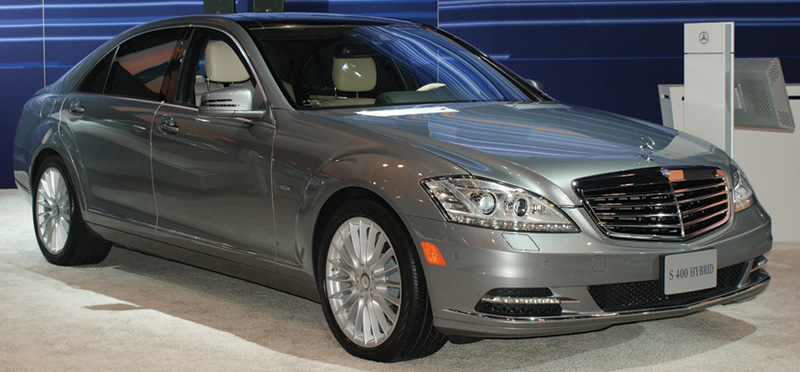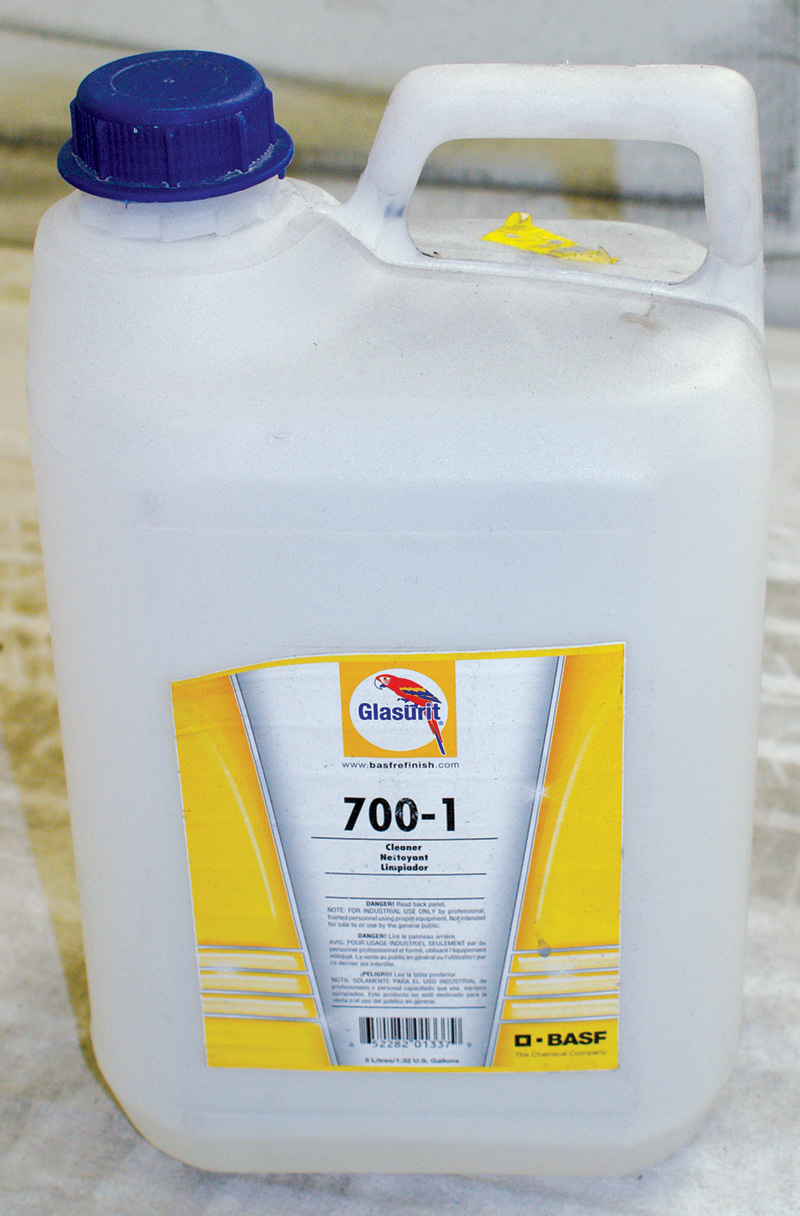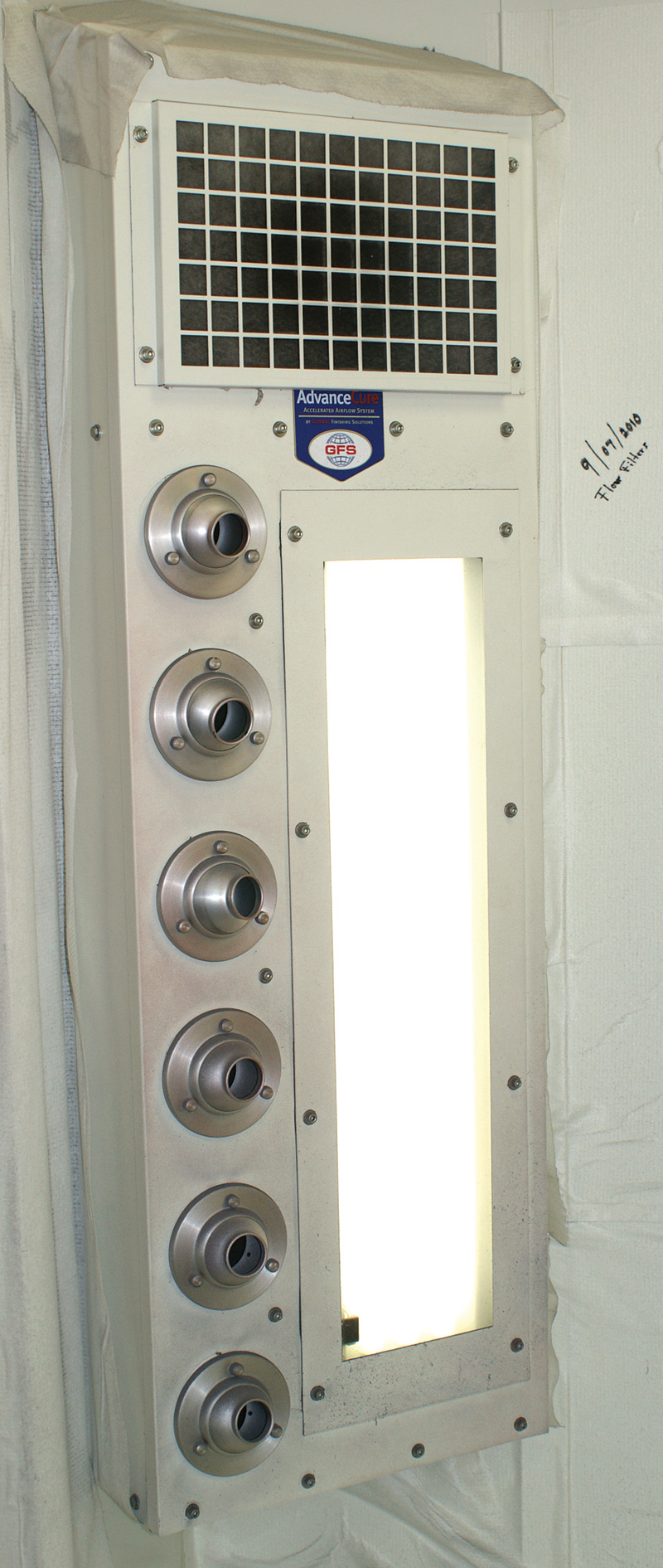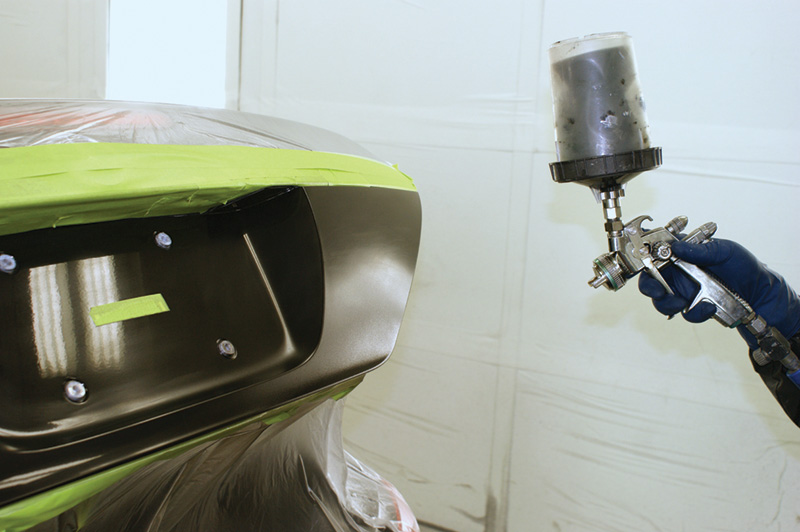When using water-borne paints, you have to remember, “It’s the same, but different!†There are obvious similarities to solvent-based painting, but you need to know the subtle changes in procedures and equipment

Special paint such as this new S-Class metallic should be dried more slowly than conventional colors to allow the metal flakes to disperse more evenly. This means relatively less airflow.
Automotive finishes change all the time. These changes usually enhance color, depth, or some other aesthetic appeal. Once in awhile, they are function over form — mechanical properties such as chip resistance. But the way we apply finishes stays mostly the same. It’s not very often that significant changes to paint’s chemical composition require us to learn a new process. While you might consider water-borne paints such a case, they’re not exactly new. The idea of using water instead of high-VOC solvents to carry the paint to the panel has been used successfully in Europe for over 10 years. You will still need your experience with spray guns, but a few tips and some minor tweaking will help you produce better results.
Preparation
As with any other refinish job, your success will depend on your preparation. Of course, any panel you are going to paint will have to be thoroughly cleaned. If you’re using a conventional solvent-based primer, you should use conventional solvent-based cleaners to prepare the surface, then wait for them to dry completely. When applying the color coat, you must use a water-based cleaning solution. You cannot use tap water as it usually contains impurities that will contaminate the unpainted surface. These impurities can create a barrier between the primer coat and the color coat and surface irregularities will result. Your paint supplier can provide you with a cleaning solution that will work the best with the paint you’re using.

Just as you should have separate tools for working with steel and aluminum, you should also have separate supplies when is comes to cleaning parts for solvent and water-based paints. Avoid using tap water as it contains impurities.
HVLP
One of the significant changes in the process is HVLP (High Volume Low Pressure) application. This simply means a high volume of water-based paint through the spray gun applied at a low pressure. You certainly know your own equipment, but here are some general guidelines. You should be working with 28 to 35 psi of dry, filtered air pressure. For small jobs, you can use a water-based high-solid primer. For this, you will want to adjust pressure to the higher end of the scale at 35 psi. It is a good idea to use a quick change spray tip because with the high-solid primer the tip is more likely to clog. On larger base-coat jobs, it is still recommended that you use solvent-based primers applied with conventional methods.

Remember, temperature is not as much of a factor in drying water-borne paints as increased airflow, which will reduce your flash-off time between coats.
When applying the water-based color coat, you can work in the lower side of the pressure range at about 28 psi. The paint is thinner so you don’t need as much pressure to get an even spray pattern. Also, with thinner paint the tips are less likely to clog. You can use the painting technique you’re used to, but you also may want to hold the spray gun 1.5 to 2 feet away as you evenly sweep across the panel surface. With high volume and lower pressure there is less overspray, so you can move farther away from the painting surface and get more even coverage. With less overspray, you should have more control of “blending†in with the unpainted surface around the repair area.

You should be aiming for a one mil coat when spraying a panel. This should take one to one and a half applications if done properly. You should apply around 30 psi to your gun until you get a feel for the technique.
The goal
You should be trying to apply one mil of paint evenly. Any more than that and the paint may start to run. This will create more work, with more wet-sanding between applications. If you use thinner coats, you can always apply additional coats if necessary. Thinner coats also reduce the flash-off period. Remember that water-borne paints do not depend on higher temperatures for drying, as solvent based paints do. Air movement is more critical. For smaller jobs, one to two air blowers are sufficient. If painting an entire panel, you should use the blower system built into your spray booth. The more dry filtered air you can apply to your refinished surface the faster it will dry. However, we may not always want faster drying times.

A modern paint booth has settings to optimize the treatment of water-based paints. The unit is programmed to control each step of the refinishing process and is a worthwhile investment for higher-volume facilities.
If you’re painting with a special finish, you may want to adjust your flash-off period. Metallic finishes contain suspended metal flakes. It is sometimes difficult to maintain even density when painting. When applying metallic paints, you should adjust your airflow for a longer drying time. It helps prevent a “blotched†finish. This gives the suspended material time to evenly disperse while on the painted surface and provide a more even appearance when everything is dry. To protect any finish, a high-solid clear coat is recommended. These are typically solvent-based and offer high mechanical strength to the surface, which prevents scratches and chips. We recommend you have one set of refinishing tools for solvent and one for water-based paints to prevent cross-contamination.
Safety First
Although water-based paints are safer for body men and painters on the floor, you still need to take every precaution you would for high-VOC solvent-based paints. Respirators and air recirculation systems still need to be used. Typically, the human body will react to solvents introduced to it, but water-based materials are not rejected by the body right away. The body can absorb the water and any other impurities suspended in it. Water-based paints may not smell as strong as those that are solvent-based but ignoring safety measures can still lead to long-term health effects with continued exposure.
So, the refinishing process has not changed all that much. With water-borne products, there are only subtle changes that will help the job flow more smoothly with fewer corrections. A healthier, safer working environment and a quality finish for that Mercedes-Benz vehicle sounds like a win/win situation for everyone.
Â






0 Comments